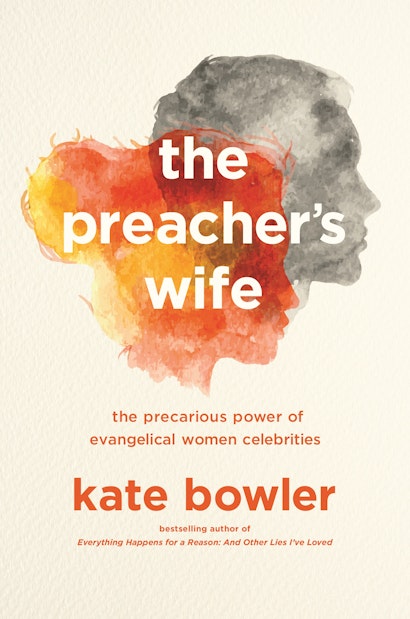This month’s Book Club Pick is The Preacher’s Wife by Kate Bowler. In this book, Bowler tells the story of an important new figure that has appeared on the center stage of American evangelicalism—the celebrity preacher’s wife. Whether standing alone or next to their husbands, the leading women of megaministry play many parts: the preacher, the homemaker, the talent, the counselor, and the beauty. The biggest stars—such as Beth Moore, Joyce Meyer, and Victoria Osteen—write bestselling books, grab high ratings on Christian television, and even preach. In this engaging book, Kate Bowler offers a sympathetic and revealing portrait of megachurch women celebrities, showing how they must balance the demands of celebrity culture and conservative, male-dominated faiths. Nadia Bolz-Weber, New York Times bestselling author of Pastrix, writes, “Bowler managed to help me understand these women, marvel at these women, and even respect the creative tenacity of these women, when on my own, and without her guidance I would have only ever criticized these women—and for that I am grateful.” This is an ideal selection for book groups who are fans of Frances FitzGerald’s The Evangelicals or Kevin Kruse’s One Nation Under God or for groups who are interested in discussing women’s role in modern American religion.
The discussion questions below are meant to guide your conversations, and we encourage you to share highlights from your discussion—and pictures!—via social media, using hashtag #ReadPUPforBookClub.
Discussion Questions
- Bowler writes that, “in almost every spiritual empire, there was a she.” To what extent does the treatment of and expectations of these women resemble something more universal in terms of how women in public life—politicians, celebrities—have been treated across history? Does anything feel specific to the cultural of American evangelical Christianity?
- Bowler suggests the power held by the women in her book is “precarious.” Does it seem possible that well known evangelical women can and will reach a point of being able to be celebrities in their own right?
- How familiar were you with the concept of the preacher’s wife before reading this book? What most surprised you?
- Bowler notes that the collective income of the top earning celebrity evangelical couples is $8.5 billion a year. Does that number surprise you?
- Early in the book, Bowler writes about being at summer camp and realizing how differently men and women were treated within the church. When did you first become aware of your gender and the extent to which it determines your social experience? Has that changed with time?
- Bowler notes that the women that she writes about are “religious reflections of almost mythic American ideals of women as wives and mothers, pillars and martyrs, in a culture divided over whether women should lean in or opt out.” How do you see that statement reflected in the stories that follow?
- Christian female stars from the 1970s onward “professionalized their domestic life, making their home into a showplace and their marriage into business.” The 2000s saw the rise of a new generation of celebrity Christian “mommy bloggers” and “Christian Etsy Culture” stars. How did the role of homemaker help women to find new duties and develop platforms in the church?
- From Amy Grant to Tammy Faye Baker, “a woman could inhabit endless non-pulpit roles, from pop princess to televangelist, so long as she was the sweet harmony to his strong melody. What does Bowler mean when she writes that as long as the women were “the talent” they were given leeway?
- Bowler writes that although few women could single-handedly command a large religious television audience, Mother Angelica was one incredibly successful exception. What made her different?
- In chapter four, Bowler recounts a conversation with Jeanne, who brings up an instance when she felt that she had overshared in her sermon. As a communicator, preacher, and teacher, she feels she must always “walk the line.” Discuss the balance that the women must strike in being vulnerable with their congregations without giving away too much.
- Early Christian women celebs included former beauty queens Anita Bryant and Terry Meewsen, cohost of The 700 Club. Today, “the largest women’s ministries are dazzling displays of commercial beauty.” Why is physical attractiveness so important in megaministries? How has that changed over time? Could you imagine a future in which women, religious and secular alike, are able to separate power from appearance?
- Bowler includes a number of powerful images throughout the book. Which were most memorable for you and why?
About the Author
Kate Bowler is the author of Blessed: A History of the American Prosperity Gospel and the memoir Everything Happens for a Reason: And Other Lies I’ve Loved. She is associate professor at Duke Divinity School. Twitter @KatecBowler

